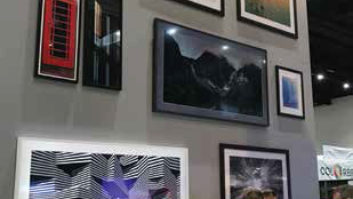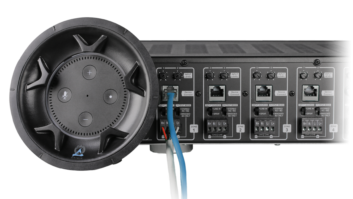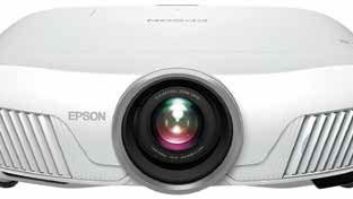Rajeev Mishra, Director, New Ventures, Epson AmericaCredited with creating many firsts, including the first quartz watch, as well as innovative 3LCD-based products, Epson has been a major technology manufacturer for more than a century. For the past five years, the Japan-based corporations U.S arm, Epson America, has been tapping into the CEDIA channel to bring its 3LCD front-projection expertiseoften put to use in education and government applicationsto a broader audience. RS spoke with Rajeev Mishra, the companys director of new ventures, about Epsons role in the custom installation market.
Most people are familiar with Epson mainly as a printer and photocopier solutions manufacturer. What drew the company to the custom installation channel?
Epson is the largest manufacturer of projectors in the world. We have a 21-percent share of the world market and a 23-percent share of the U.S. market. We know consumers enjoy the big screen and big sound, and we want to drive more movie theaters in consumers homes. So when we looked at the business, we looked at the folks who are really driving that, who are educating consumers and providing turnkey solutions, and that was the custom installation channel. They are best equipped today to sell front projection to the market. Knowing that, we [began] to build this business and partner with CEDIA installers. The greatest testament to our effort was that this year we got the number-one spot from Inside Track in the home video category.
What is Epsons approach to differentiating its custom AV solutions from those already on the market?
When we started this business we really wanted to understand the channel dynamic. We spoke to a number of folks in the custom installation channel. In fact, we have a CEDIA advisory board that we keep in regular contact with to ensure we are always aligned. And what do installers see from Epson? They see things like differentiated product, controlled distribution, unilateral pricing, and service and support programs that cater to [their] needs, versus the consumer that buys something at a Best Buy. We have designed a good part of our business around how the custom installation world works. From a service and support point of view, that is important to us because for us it not just about selling the projector; we know the installer is going to get the call downstream from that end user who says, I need you to come change the bulb, or something is not working properly. And with that in mind, being a Japanese company, quality is key for us. We make very reliable projectors, and most of the dealers we talk to tell us how our products yield the least number of support calls.
Epson is carving a niche for itself as the 3LCD projector go-to brand. How is this technology different from DLP? How does it benefit custom installers to understand this difference?
There are basically two methods used to create front projection. 3LCD uses three LCD panels to create an image: one for red, one for green, and one for blue. What is unique about the technology is that all three panels are on all the time, which is called full-time color. A one-chip DLP use a color wheel, which has segments of red, green, and blue and, in some cases, other colors as well. The color wheel spins and at any given moment in time one particular color is being projected to the screen. But the wheel spins very fast and the user basically creates the image in their head. With 3LCD the complete image is created inside the projector and then projected on to the screen. We think LCD is a superior technology, as you are seeing all colors on all the time. We stick with the primary colors; that is all you need to create any color out there.
3LCD, in general, tends to be more efficient. You can get the same lumens for, typically, a lower wattage lamp. The reason we think that is important is if you can use a lower wattage lamp to yield the same lumens output, then you have less heat in the projector to get out. So we always focus on maximizing the efficiency. You, therefore, have less heat, less power consumption, and, you have the more reliable product, in theory, when you address this point.


Epson’s complete home theater solution, Ensemble, was created to help custom installers tap into the consumer segment that is looking for a quality, affordable home theater experience.
Epson debuted its CI-friendly home theater, The Ensemble, last year. How is it different from other all-in-one solutions? How can CI dealers use it for profit growth?
Designed from the ground up, we believe it addresses the barriers that are out there for consumers: they dont know the kind of experience that front-projection can provide; for those who do know about it, they think it is very expensive; and they are concerned about how is it going to look. With that in mind, we said lets come up with a solution that addresses those barriers. So first, we said we are going to create a solution that takes the guesswork out of it. We are going to create a solution that has high-performance audio and video, and it is optimized, and it is one purchase instead of six. From the installers point of view, we are enabling them to go after a segment that they wont normally go after today. This solution, at $5,000 and $7,000 retail for the 720 and 1080p, now makes front projection accessible. Think of how many people out there have basements or bonus rooms. Here is a solution that drops right in and it enables the installer to increase revenue and profits by selling to a new customer. A customer that normally wouldnt be in the market for the $50,000 or $100,000 front-projection system may be in the market for the Ensemble solution. We think we are expanding the market.
What does Epson anticipate will be the driving trends in the AV projection segment?
Product wise, we want to keep raising the bar with performance, image quality, brightness, contrast ratio, and installer-friendly features. I am expecting over the next few years to see wireless projectors, once that technology has been vetted and figured out. I also foresee more marketing focus around what is front projection, eliminating the myths that are out there and showing them that it really is accessible. You dont have to have a 10,000-square-foot house and a million-dollar salary to enjoy front projection.
Llanor Alleyne is managing editor of Residential Systems based in New York City.






